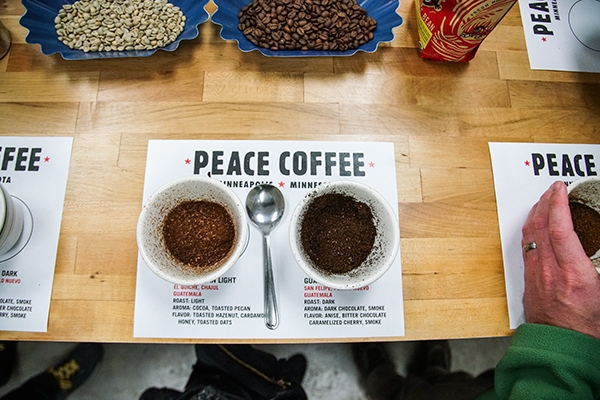
24 Feb Organic Fair-Trade Brew: Roastery Tour at Peace Coffee
I drink coffee every day, but I rarely think about where it comes from and what I’m actually putting into my body. That’s something we’ve been trying to change lately—we have been making an effort to learn where the products we buy and foods we consume come from and how they are produced. While it would be quite difficult to do this with everything in our lives, anytime we can make an effort to make more knowledgeable purchases is a step in the right direction.
Enter: Peace Coffee.

I first learned about Peace Coffee when we were making a video for Tripfilms last summer—I love the mission behind the shop and had to learn more.
“Peace Coffee’s mission is to make exceptional-tasting, organic fair-trade coffee that sustains the livelihoods of the people who grow, roast, and sell it; preserves and protects the environment that produces it; and delights the taste buds of those who drink it.”
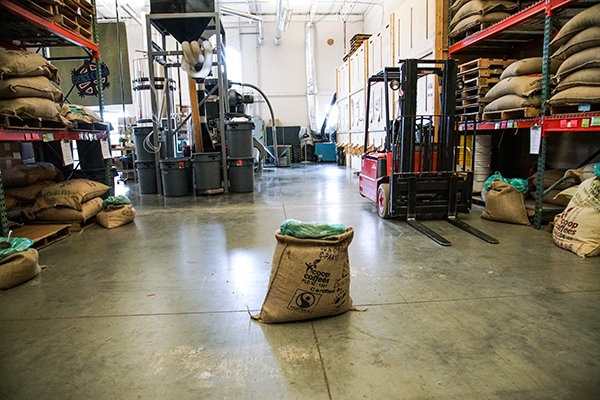
While browsing their website, I found the education section which lists training and tours, coffee recipes, coffee brewing guides and information on the exact farms and people who produce the beans for Peace Coffee. While the courses about brewing your own coffee both sounded interesting, I figured the best place to start was to hop on one of the roastery tours to learn more about Peace Coffee itself.
Tours of the roastery are offered a couple of times a month or so, and after months of conflicting schedules, I was finally able to find a date where we would be home, and I immediately booked us on a tour. Oh, and did I mention that tours are only $5 per person? Can’t get much better than that, in my opinion!
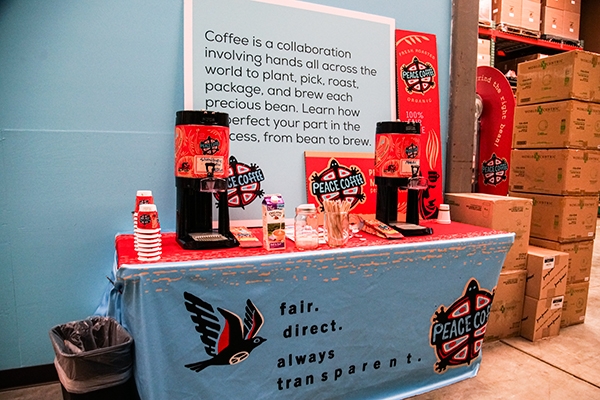
The day finally came for our tour and we made our way to the Peace Coffee headquarters and roastery for our visit. Our tour started at 11 a.m.—we were on the second tour of the day and couldn’t wait to get some caffeine into our systems. And that’s precisely what we did. The tour started with our choice of two brews, and we had access to as many cups as we wanted throughout the tour. Micah started with the Morning Glory and I tried the Snowshoe Brew. Both were delicious although I think I preferred the Snowshoe Brew a bit more.
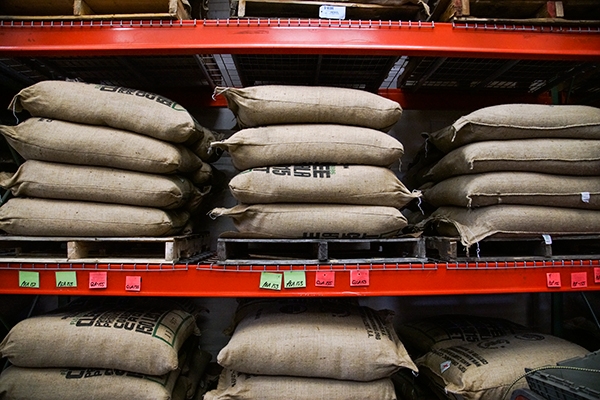
After settling in with our coffee, we relaxed around a large table for introductions and a bit of basic coffee talk. We were lucky to have a small group of 7 on our tour—it’s always nice to have a more personal tour, but capacity maxes out at 20 so the groups never really get too large.
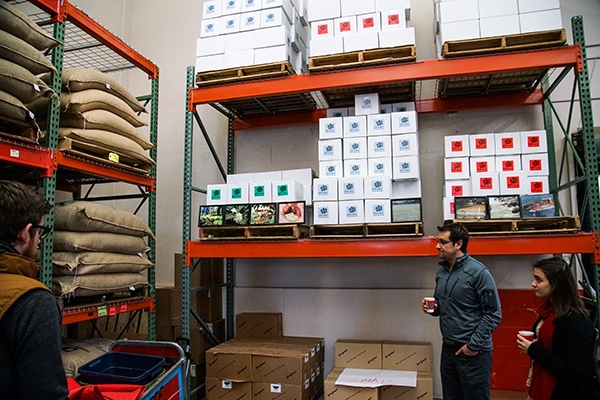
Next up, we made our way into the roastery to hear the story about how Peace Coffee was started as a “happy accident”, where and how the beans are produced and a bit about their mission to purchase and support organic fair-trade farmers who focus on sustainability. They try to create lasting partnerships with their farmers and communities of coffee growers around the world, and a portion of Peace Coffee’s profits support the Institute for Agriculture and Trade Policy’s programs that focus on “fostering sustainable food, farm and trade systems”.
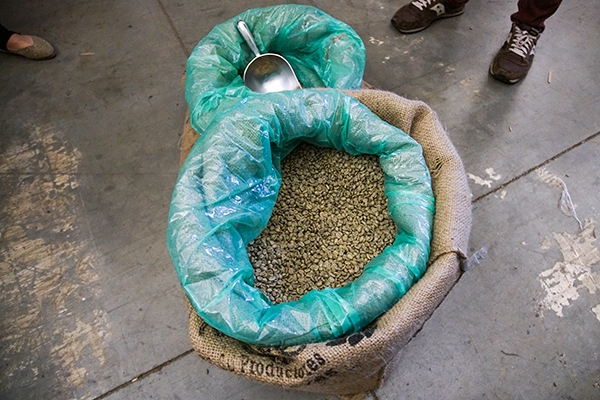
We also learned how the beans are farmed–the farms focus on shade grown beans as it is better for the beans and also allows the farmers to grow other crop yielding plants in the same fields, as well. If you’d like to know the exact farm where your coffee is grown, you can head to the “map my beans” section of the website to learn about the people and the places behind your cup of joe. Once the beans are grown, they are picked and sorted by hand, and then shipped to the very facility we were standing in. The next step in the coffee process is to roast the beans, which also happens on-site. Peace Coffee has one main roaster for their large batches of beans, and there are several smaller roasters for smaller batches and orders.
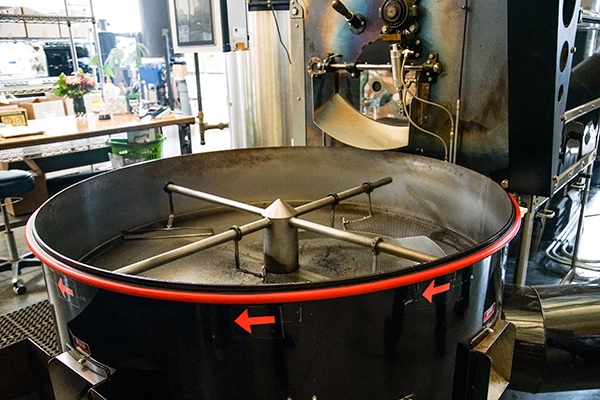
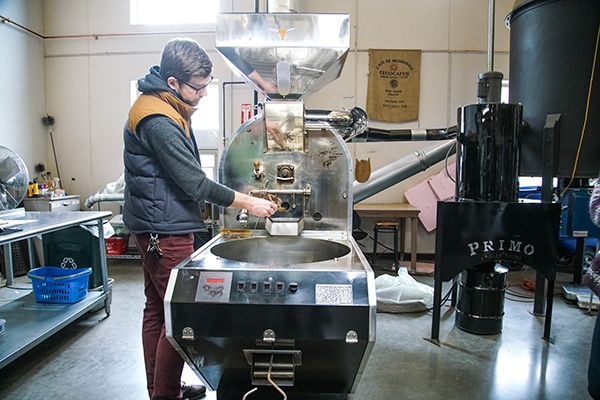
Packaging also happens in the same room, another few steps away.
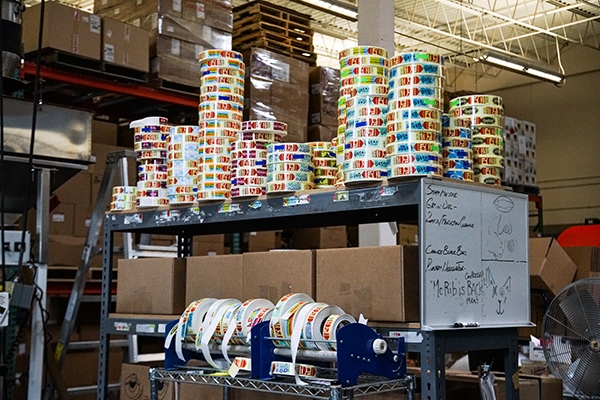
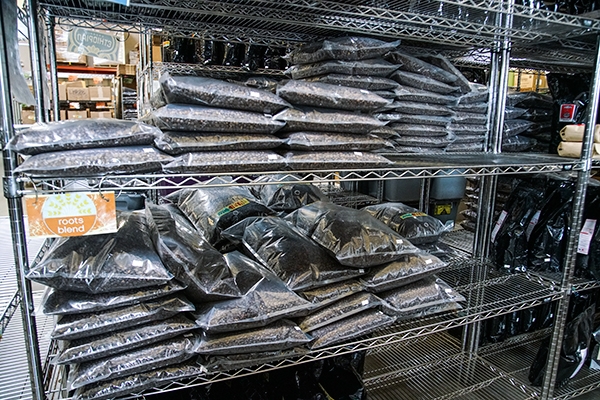
Peace Coffee not only focuses on sourcing coffee sustainably, but they also apply green and sustainable practices to their offices and roastery by setting up shop in the Greenway Office Building, which was created with careful consideration to green and sustainable designs. When it comes time to deliver the beans, anything within a 20 mile radius is delivered by bike with a trailer hitched to the back.
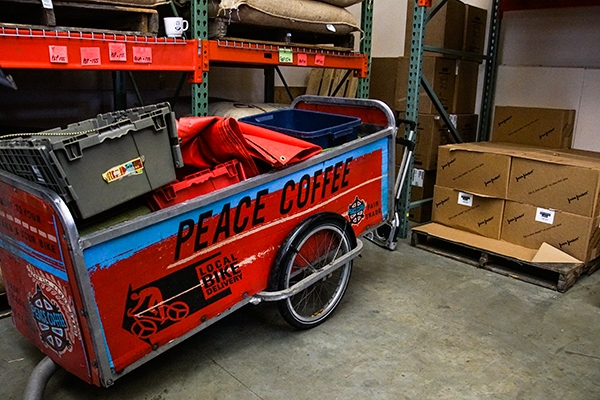
We were able to learn all about the coffee making process from farm to shelf, but that brought some questions to my mind. First and foremost, how do they come up with the flavor profile of the coffee that you always see in the coffee description?
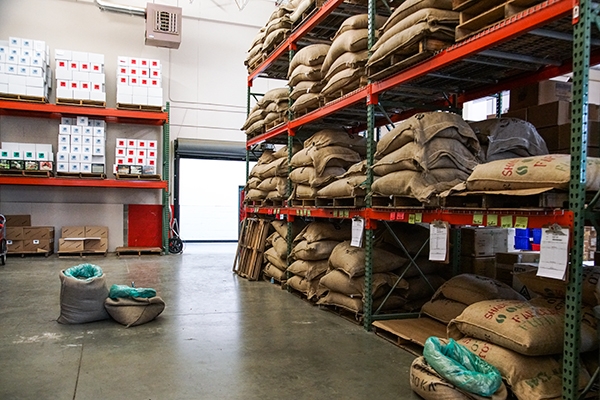
Well, we were in luck because the next item on our itinerary was to do a bit of coffee tasting. We made our way to the official tasting room and learned that there are people who go through extensive training and certification to become a “Q Grader” which is essentially someone who has developed their palate to taste the smallest nuances in different varieties of coffee—almost like a Wine Sommelier.
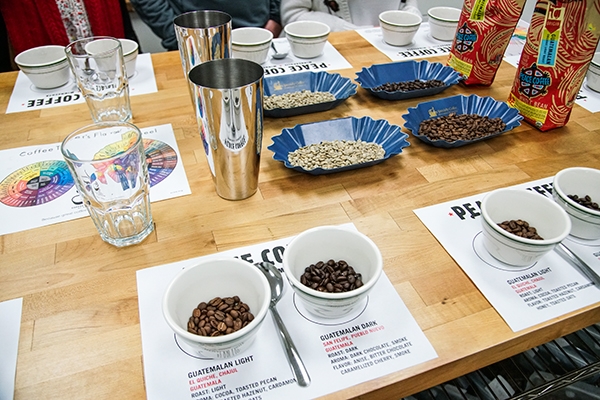
Each of us had our own set up to get us started. We ground our beans and then poured hot water over the top, paying careful attention to soak every last ground in water.
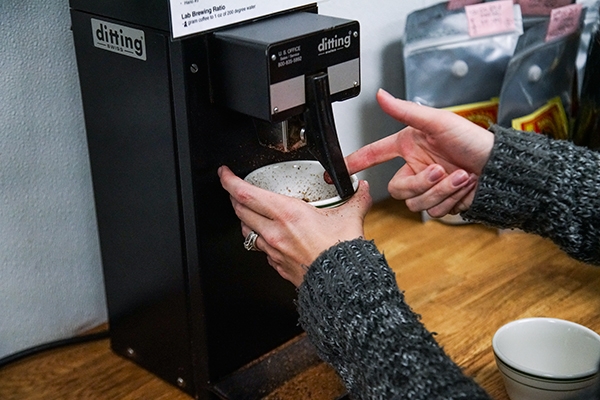
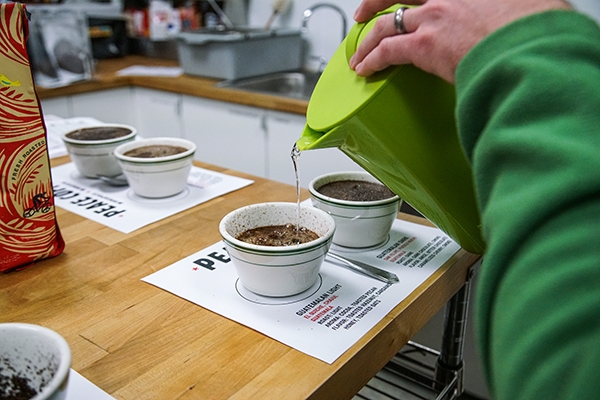
The next step was to let the cups sit so a slight crust formed on the top. We then bent down over the cup and broke the top with our spoon, smelling as we stirred. Alternating between smelling the light and the dark coffee, we tried to pick out the various notes in each cup.
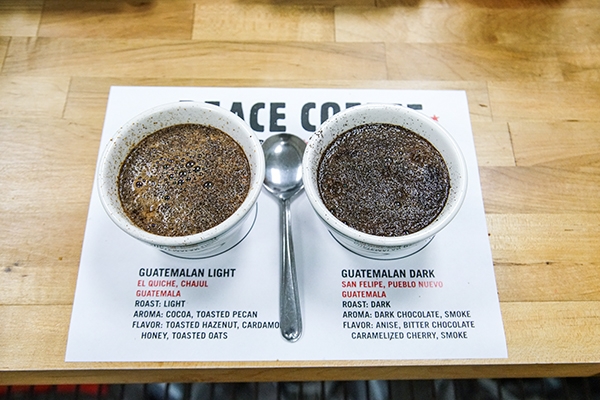
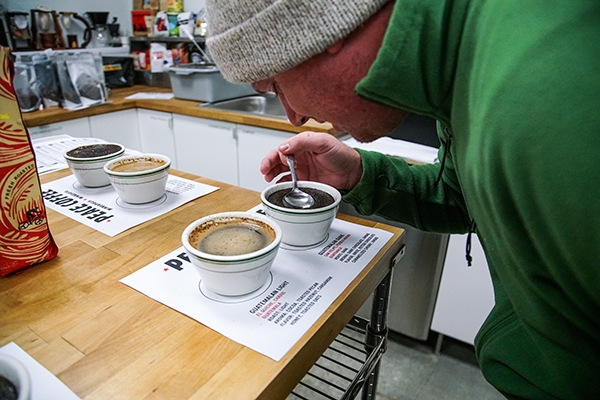
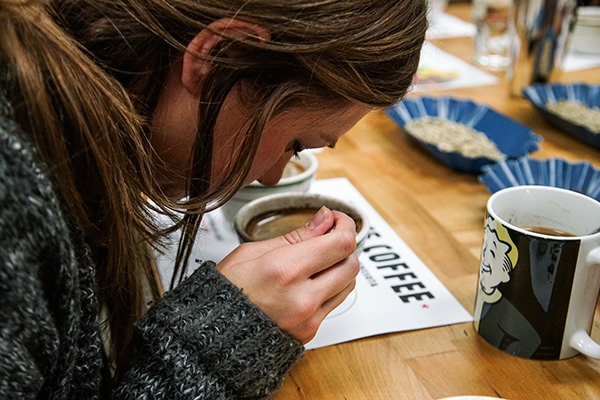
Tasting the coffee was next, but first we had to scoop the foam from the top of the cups and let them sit so they could reach the proper temperature. While we waited, we discussed how to properly taste the coffee and a bit about the coffee wheel, which is a wheel that helps you narrow down the flavor profiles in a cup of coffee.
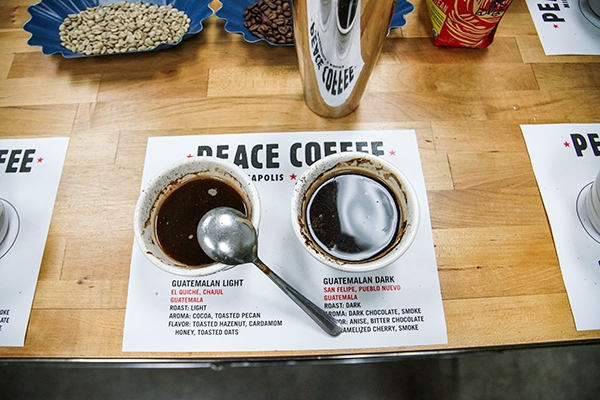
To properly taste the coffee, you need to leave your manners at home—after scooping up a spoonful from our cups, we were directed to slurp the coffee in a powerful sip. We used the charts to see what flavors we could detect and alternated between the two coffees to taste the differences. It was interesting to learn that coffee grown in different regions of the world has different flavor profiles; some regions are citrusy while others have a nutty or chocolate flavor, for example.
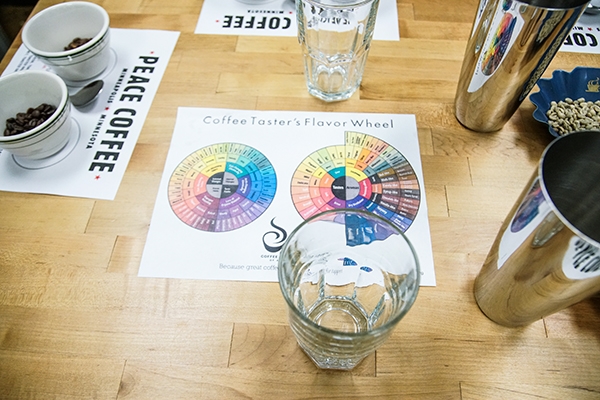
These variations and flavor profiles are used when describing a bean or when determining which beans to combine to achieve a blended coffee. By playing around with different combinations, you can create blends to match the seasons or really anything you’d like!
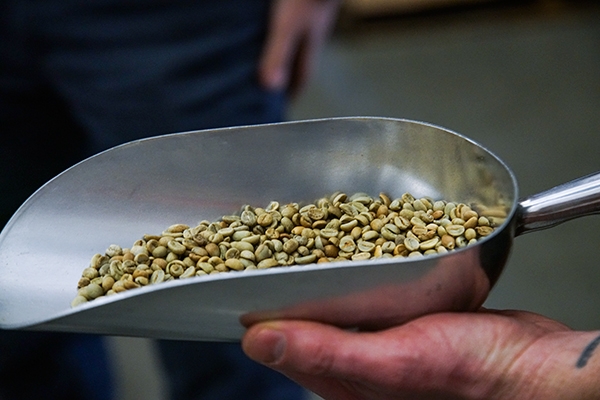
The tour was a fantastic way to spend part of our Saturday morning. It lasted only 1.5 hours, but with all we learned and did, it felt like much longer—in a good way! Our guide packed so much information into the tour and we left with a new appreciation for the coffee we drink every day. We also left with two bags of coffee and coupons for a free cup in store, another added bonus to an already wonderful tour.
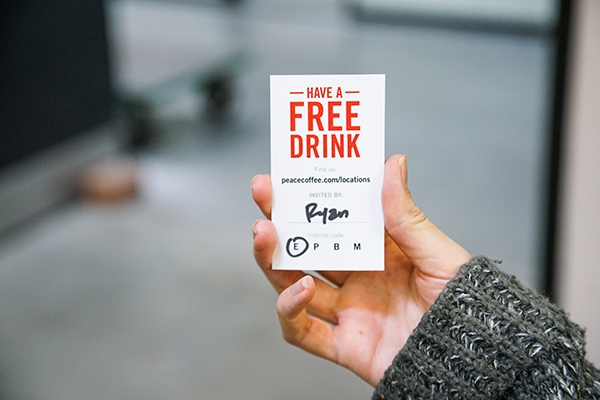
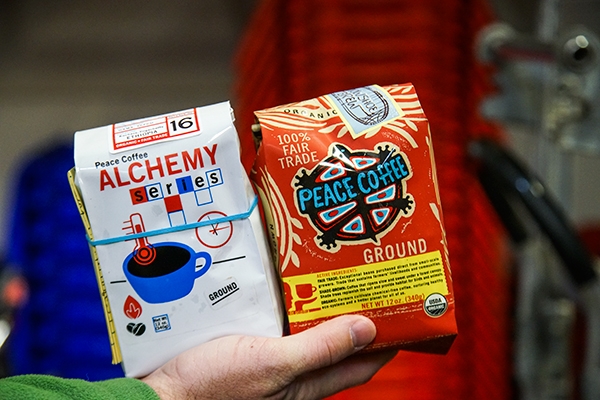
I absolutely love learning about how things are created, so it was fascinating to hear the story of how coffee is produced, from start to finish, and it was even better to learn all about Peace Coffee itself. Now I think I need to sign up for a brewing course so I can master the art of making the perfect cup of coffee at home!
Have you ever toured a coffee roastery or a coffee farm?

